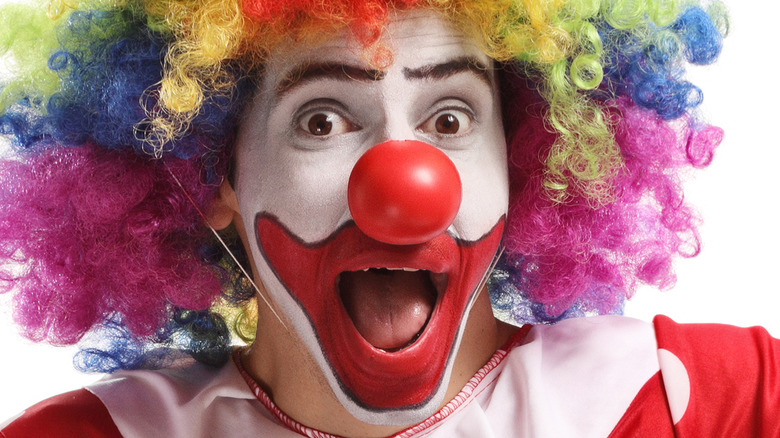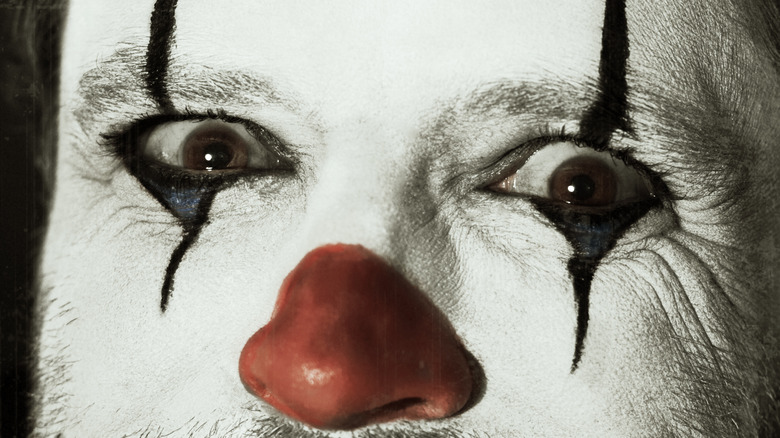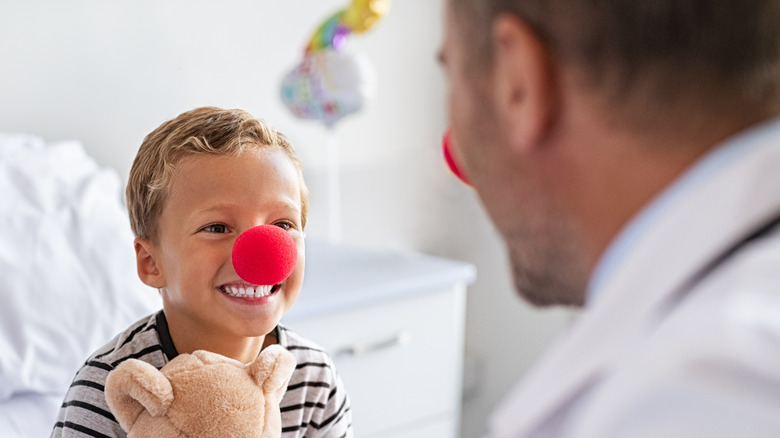The Science Behind Your Fear Of Clowns
Horror movie junkies have been enjoying something of a bloody holiday this fall season as Damien Leon's "Terrifier 2" has shredded its way through cinemas across the country. According to USA Today, several moviegoers have reportedly had such a severe reaction to the film's wildly graphic violence that they've actually been reduced to fainting and vomiting. That's the sort of horror movie magic that really only comes around once or twice in a lifetime, and at the center of all the madness, there's the film's sadistic antagonist: Art the Clown.
Even in 2022, the clown phenomenon has yet to lose its terrifying allure in the realm of horror. The Cleveland Clinic reports that one out of 10 adults in the U.S. alone suffer from coulrophobia (an irrational fear of clowns). If you happen to be one of these people, you probably have your reasons, or maybe you don't know why you're so afraid of clowns. In any case, experts have taken a deep dive in to the matter to explore why the likes of Pennywise and Art the Clown keep so many of us up at night (via WatchMojo on YouTube).
Face your fears
According to phobia expert Adam Cox, nobody is actually born with an inherent fear of clowns. Nevertheless, coulrophobia does tend to evidence itself in those early years of existence. "As a child you might have met someone whose face you couldn't see, whether that be Father Christmas, a clown or someone dressed up in a cuddly animal costume," Cox told the Daily Mail. "Because their face is obscured by make-up or a mask, and we can't properly see it, it's much more difficult to read their expressions and intentions."
When someone's face is unnaturally tarnished or obscured, you can't fully ascertain their identity or their intentions, so it's to be expected that the budding human brain is put off by the general appearance of uncertainty. Sometimes, this fear endures beyond the formative years of childhood, especially if someone had an especially unpleasant childhood encounter with a masked or painted individual like a clown. "Faces are one of our most important non-verbal communication signals," says Dr. Frances Maratos. "Clowns very often look as though they have a frozen smile so you cannot see what the clown is really thinking nor what their motives are" (via Daily Mail).
Unnaturally happy
Clowns have a long and, generally, pleasant place in entertainment history. Joseph Grimaldi, often recognized as the first circus clown, appeared in England in the early 19th century (per Britannica). Still, there is a very real basis for feeling unsettled in the presence of a clown — especially for children. In a blog post from the University of Derby, England, Dr. Frances Maratos explained how the exaggerated physical features that clowns sport are liable to scare an impressionable child who otherwise expects to see a normal face with natural, worldly attributes staring down at them. "People recognise that they [clowns] should be human-like but actually somehow they do not look quite right," she shared. "Instead they sometimes look grotesque and very often, their faces have been distorted. This can be very unnerving."
Of course, societal reinforcements that crop up in films like "It" and "Terrifier 2" that paint clowns out to be maniacal killers certainly don't help quell the uneasiness that some of us feel in relation to them. If you're somebody who experiences consistent coulrophobia, there are potential solutions and therapy techniques available (via WebMD).


